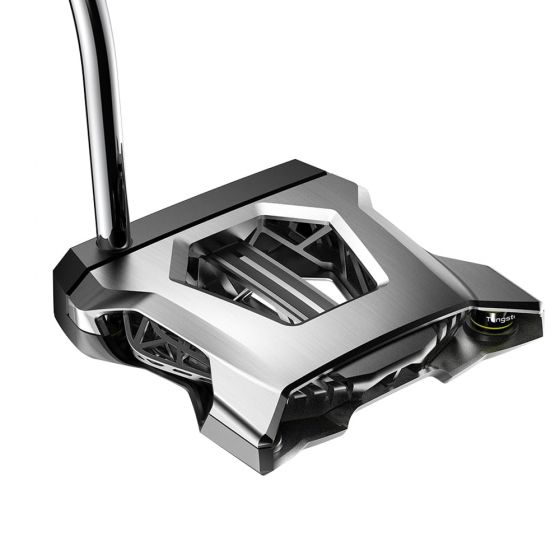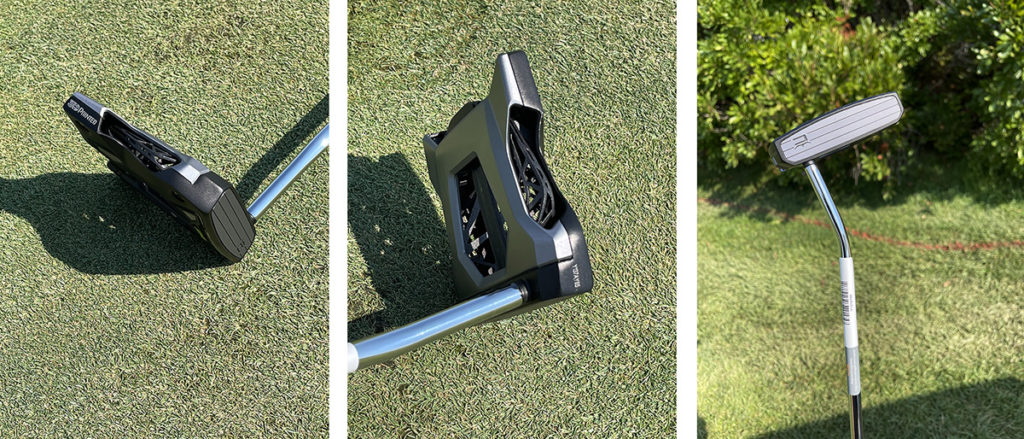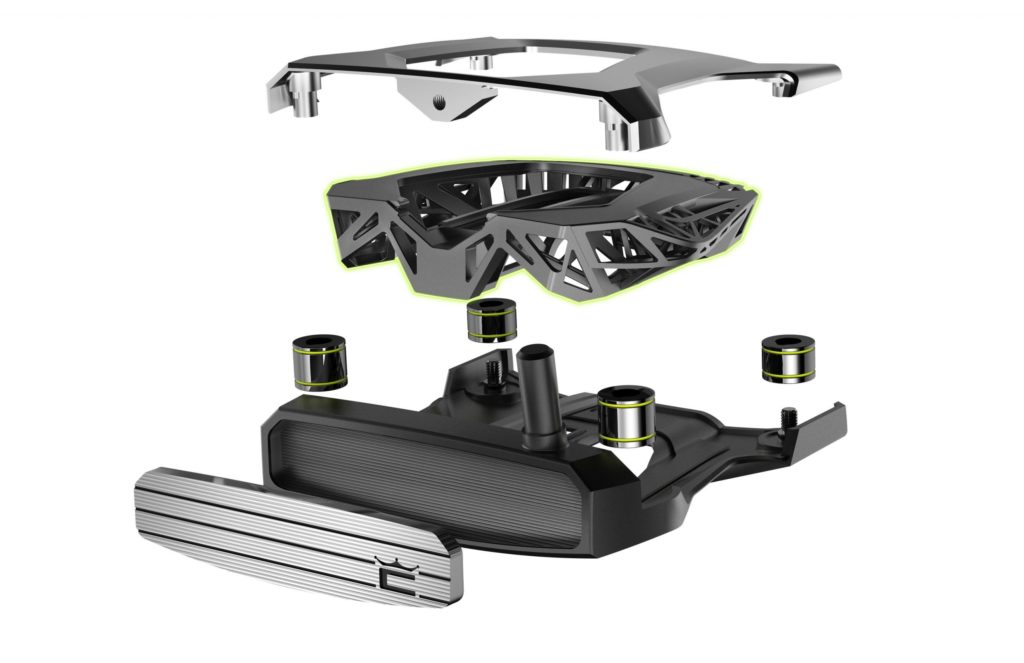In our latest product review, Alan Meckler, CEO of 3DPrint.com’s parent company, 3DR Holdings, had the opportunity to test out one of Cobra Golf’s 3D printed putters, made using HP’s Multi Jet Fusion technology.
I have been playing golf for over 40 years. Like many weekend golfers, inconsistency is the hallmark of my game. My golf index (“handicap”, a universal measurement used throughout the world) is 14. This means that, on average, my score for a round of eighteen holes ranges from 87 to 93. When I score best, it usually has to do with how well I putt. After all, as the saying goes, “Drive for show, putt for dough”!
Indeed, the putter is typically utilized more times than any of the 14 clubs one has in a golf bag. My goal (and the generally accepted standard) is to average two putts per hole, or better. I rarely accomplish this goal, more likely averaging a bit over. Because putting is so important to garnering a better score, one is always on the look-out for a new putter that will help in the quest to come in under two putts per hole.
Thanks to Cobra Golf, 3DPrint.com was lucky enough to receive a test putter from its new “King 3D Printed Series”, made with HP’s multi jet fusion (MJF) technology. A few other companies have dabbled, but Cobra has established itself as the worldwide leader in 3D printed golf clubs. Integrating 3D printing into golf club production is an inevitable decision for the golf industry, and Cobra is to be applauded for leading the way.
Cobra’s 3D Printed Clubs
In the past, Cobra has used HP’s MetalJet 3D printing technology to produce limited edition clubs, meaning that it could turn to metal binder jetting again in the future. Its stable product line, however, relies on MJF, a form of polymer sintering, to produce key components for its series. Cobra offers six 3D printed putter designs in a range of club-head styles that have a variety of shaft lengths – all in all numbering twenty options. Each model features a nylon 3D printed cartridge integrated with traditionally manufactured components. Coming in at $349 for the majority of the clubs, the retail price for the 3D printed line is on par with any good brand name putter.
Our test model was the Agera. With a 34-inch-long shaft, the Agera has a mallet design, with a striking all-black appearance. Inside the club head is a 3D printed lattice unit paired with tungsten weights. While the face of the putter (which makes contact with the ball) is aluminum, the body is steel, with a forged aluminum crown. The club looked great, but more importantly it felt great in my hands and enabled a great sense of control throughout the putting motion.
With 3D printing included in the process, a world of complex geometries and weight distribution is opened up to Cobra. Without 3D printing, such a design wouldn’t be possible—or it wouldn’t be possible in any cost-efficient manner.
The production of this putter is no small technical feat, integrating traditional manufacturing with a lot of additive manufacturing. The 3D printed nylon elements replace what would be aluminum in traditionally manufactured putters. Nylon is much lighter than aluminum and this weight saving means that the Agera (and all the other Cobra models) tend to be notably lighter in weight than traditionally manufactured putters.
3D Printed Putters Enhance Performance
I played four rounds (seventy-two holes) with the Cobra King Agera 3D printed putter. So, how did I do? I produced more one-putt holes and fewer three-putt holes. When I compared the Agera with my incumbent, Odyssey mallet putter, I found the Agera’s lighter weight and wonderful balance gave me a smoother stroke.
On average, I scored about three strokes better than my handicap. Of course, this is a small sample size, and, while one does “…putt for dough,” the results from Tee to Green do make a difference, as well. In this regard, I played pretty well by my standards during these practice rounds. But who is to say that the confidence engendered by my putting results didn’t spillover into the rest of my game?
I look forward to spending a full golf season with the Cobra Agera 3D printed putter. I hope that this early success will lead to even better putting over the next year. With the plethora of styles and options available within the Cobra King 3D Printed putter family, I feel confident recommending the product to anyone.
Subscribe to Our Email Newsletter
Stay up-to-date on all the latest news from the 3D printing industry and receive information and offers from third party vendors.
You May Also Like
3D Printing Financials: Fathom Struggles in Financial Quicksand During Critical Transition
Facing a year of key transitions and financial pressures, Fathom (Nasdaq: FTHM) has filed its annual report for 2023 with the U.S. Securities and Exchange Commission (SEC). The document outlines...
Latest Earnings Overview for Australian 3D Printing Firms Titomic and AML3D
Australian 3D printing manufacturing firms Titomic (ASX: TTT) and AML3D (ASX: AL3) reported their financial results for the period from July to December 2023, marking the first half of their...
3D Printing Webinar and Event Roundup: April 7, 2024
Webinars and events in the 3D printing industry are picking back up this week! Sea-Air-Space is coming to Maryland, and SAE International is sponsoring a 3D Systems webinar about 3D...
3D Printing Financials: Unpacking Farsoon and BLT’s 2023 Performance
In the Chinese 3D printing industry, two companies, Farsoon (SHA: 688433) and Bright Laser Technologies, or BLT (SHA: 688333), have recently unveiled their full-year earnings for 2023. Farsoon reported increases...


































